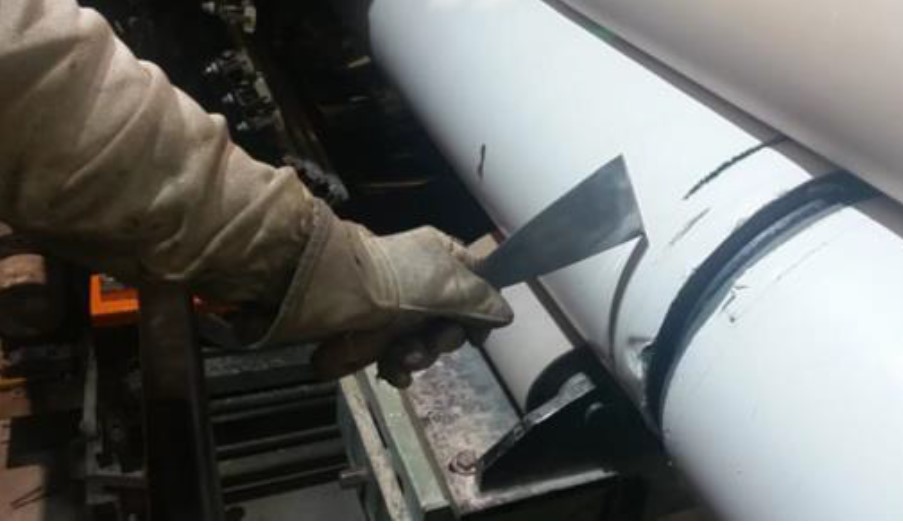LTI: burns to forearms
What happened?
During pipe coating application work at a third-party sub-contractor worksite, a worker received serious burns to both forearms, that resulted in an LTI. The injury occurred at the start of the operation when the pipe was being coated with the first layer. During this operation the transition between pipes required the manual application of a spatula to mark the pipe cutting area, as shown below. While marking the pipe, the injured person’s arm touched the pipe due to an unexpected movement of the pipe assembly, causing serious burns to both forearms. This injury was seen by another employee who activated the line emergency stop and helped the injured person away from the line of fire situation to a safe place. First aid was given before the casualty was taken to hospital for further treatment.


What went wrong
The final investigation is still to be released, but preliminary findings from this incident and other recent third-party incidents have identified the following issues:
- The task was deemed to require manual intervention using a spatula as a marking tool, thus exposing people to possible injuries;
- The task was seen as routine, to be undertaken on a regular basis. There was no challenge to re-engineer the task by those performing it or supervising it;
- There was no consideration of hierarchy of risk controls, or specifically automated or engineered methods to eliminate human exposure;
- Company management had paid a visit and had previously identified the risks associated with the task and provided improvement suggestions to the sub-contractor.
Recommendations
- Ensure that the obligation and expectation to exercise the stop work authority is clearly communicated and understood by all, particularly third-party and sub-contract personnel;
- Can we do the job in a safer way? Ensure we have clear expectations in respect of controlling risk and identifying tasks that can be reengineered to remove the risk of human intervention or manual handling;
- Dare to challenge the “norm” with a fresh set of eyes as to how tasks are actually being conducted.
Our member notes an increasing need to improve human factors, risk perception and competency considerations for personnel involved in third-party operations. Our members’ analysis of their own “top 20” incident causes to date in 2022 confirms that inadequate engineering/design and use of tools and equipment are within the top 5 causes of incidents.
Members may wish to refer to
Safety Event
Published: 30 November 2022
Download: IMCA SF 27/22
IMCA Safety Flashes
Submit a Report
IMCA Safety Flashes summarise key safety matters and incidents, allowing lessons to be more easily learnt for the benefit of all. The effectiveness of the IMCA Safety Flash system depends on Members sharing information and so avoiding repeat incidents. Please consider adding [email protected] to your internal distribution list for safety alerts or manually submitting information on incidents you consider may be relevant. All information is anonymised or sanitised, as appropriate.
IMCA’s store terms and conditions (https://www.imca-int.com/legal-notices/terms/) apply to all downloads from IMCA’s website, including this document.
IMCA makes every effort to ensure the accuracy and reliability of the data contained in the documents it publishes, but IMCA shall not be liable for any guidance and/or recommendation and/or statement herein contained. The information contained in this document does not fulfil or replace any individual’s or Member's legal, regulatory or other duties or obligations in respect of their operations. Individuals and Members remain solely responsible for the safe, lawful and proper conduct of their operations.
